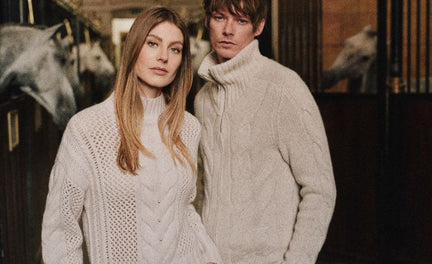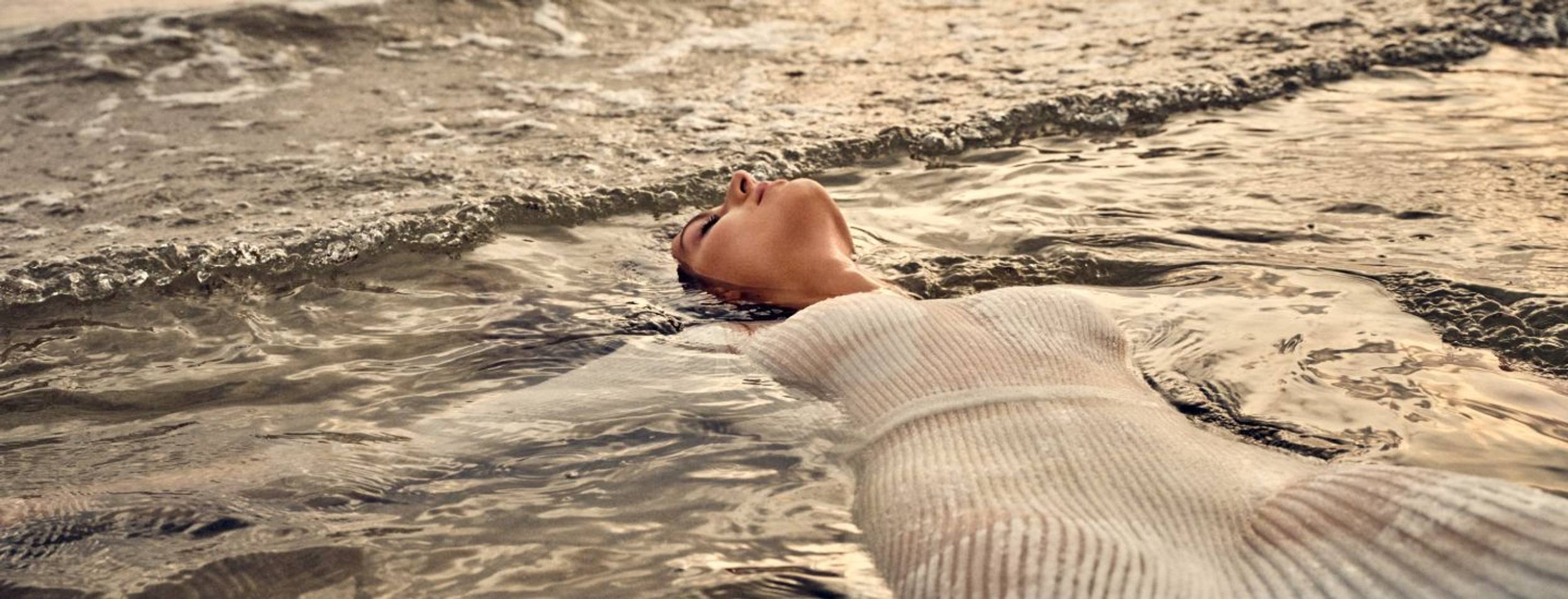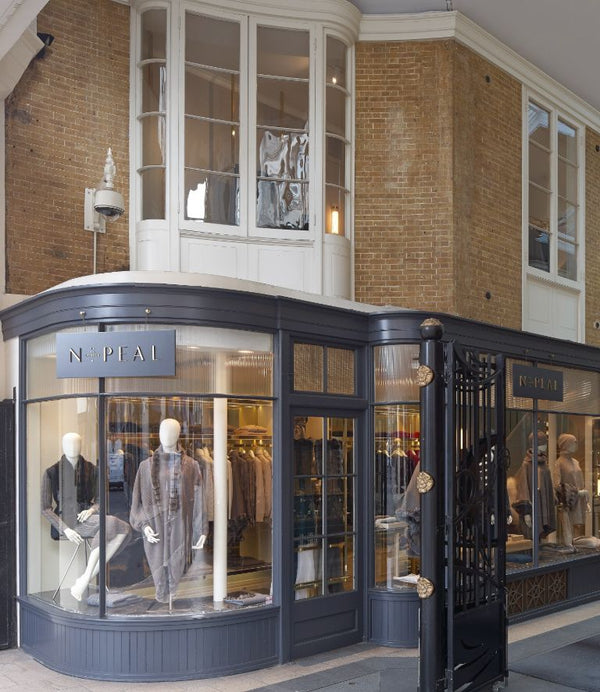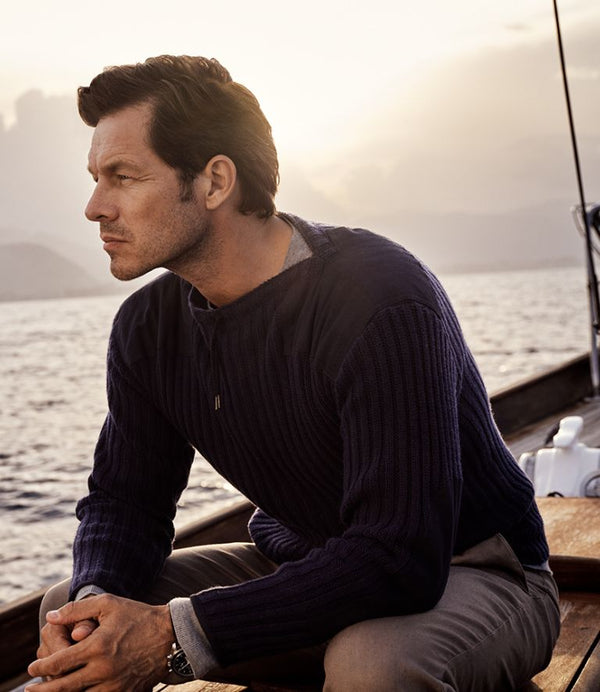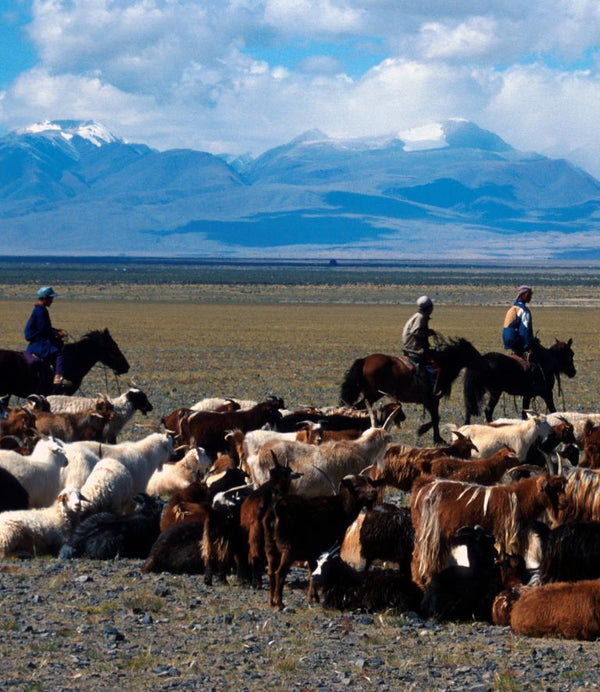Why Cashmere
Incredibly fine fibres, lightness, warmth and shape retention are just a few of the myriad advantages of cashmere, writes Carolyn Asome
Hubert de Givenchy once remarked, 'All a woman needs to be chic is a raincoat, two suits, a pair of trousers and a cashmere sweater'. It's little wonder then that such a glittering roster of women - Ava Gardner, Elizabeth Taylor, Marilyn Monroe, Joan Collins, Princess Diana, and more recently, Helena Christiansen - have all succumbed to the seduction of N.Peal Cashmere, the 84-year-old knitwear brand.
Combed from the underbelly of goats living at high altitude in Mongolia, this most noble of fabrics possesses natural properties that are highly sought after. For a start, few other fabrics are as deliciously soft against your skin. Adam Holdsworth, managing and creative director at N.Peal reminds us that this very fine fibre is a staggeringly delicate 15. 5 microns, 'compared to human hair, which is significantly thicker at 50 microns or even merino at 23 microns'. The density of its fibres, which are much higher than those of wool, mean that its texture is not as scratchy, and is therefore delightful to wear directly on your skin.  The myriad advantages of cashmere are also imminently practical. Its insulation capacity is up to eight times higher than that of wool, making it perfect for maintaining your body temperature; keeping you cool during the summer months when wearing a lightweight knit and warm in the winter.
The myriad advantages of cashmere are also imminently practical. Its insulation capacity is up to eight times higher than that of wool, making it perfect for maintaining your body temperature; keeping you cool during the summer months when wearing a lightweight knit and warm in the winter.
It has a lightness too, which is highly desirable and certainly a lot less bulky than wool, making it an ideal and stylish travel companion. On the subject of style, it's worth noting that cashmere takes colour beautifully. In a cashmere sweater, colours look saturated and intense giving an item an almost 3D depth that isn't found so readily in other materials.
Cashmere scores highly too on shape resilience and, when washed correctly retains its shape far better than wool. In fact, it isn't unusual to hear that cashmere, when looked after properly, is often handed down through generations thus earning its slow fashion credentials.
'Our cashmere is produced with sustainability very much front of mind,' says Holdsworth. 'Animals are fed during the winter months and are therefore not tearing up the plains. Certified organic chemicals are used throughout the process. We recycle our water for irrigation as well, which makes the whole process more sustainable and minimises the impact on the environment.'
Cashmere denotes heritage, quality, luxury, and best in class. Even at a higher price point, those sweaters have an unrivalled durability that chimes with the vogue for investment dressing and buying less but buying better quality.  Washing pieces by hand using specific cashmere shampoos will help its shelf-life, so too will using breathable, sealed bags, as this will prevent months.
Washing pieces by hand using specific cashmere shampoos will help its shelf-life, so too will using breathable, sealed bags, as this will prevent months.
Played right, there's no doubt that your cashmere will become your most cherished, most worn wardrobe staples. The only drawback? Is that once you've worn some, there is no return to other lesser fabrics. Try it. You will no doubt find it's very difficult to slip into anything else.
Carolyn Asome writes about fashion for The Times, The Telegraph and Vogue. She is also the author of Vogue on Jean Paul Gaultier 
